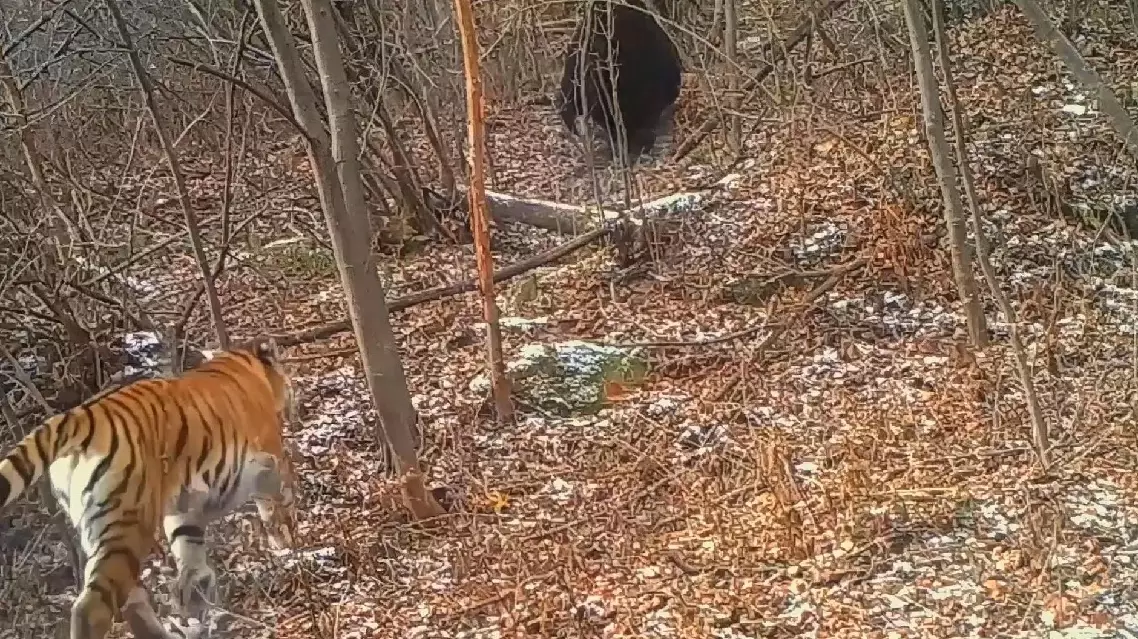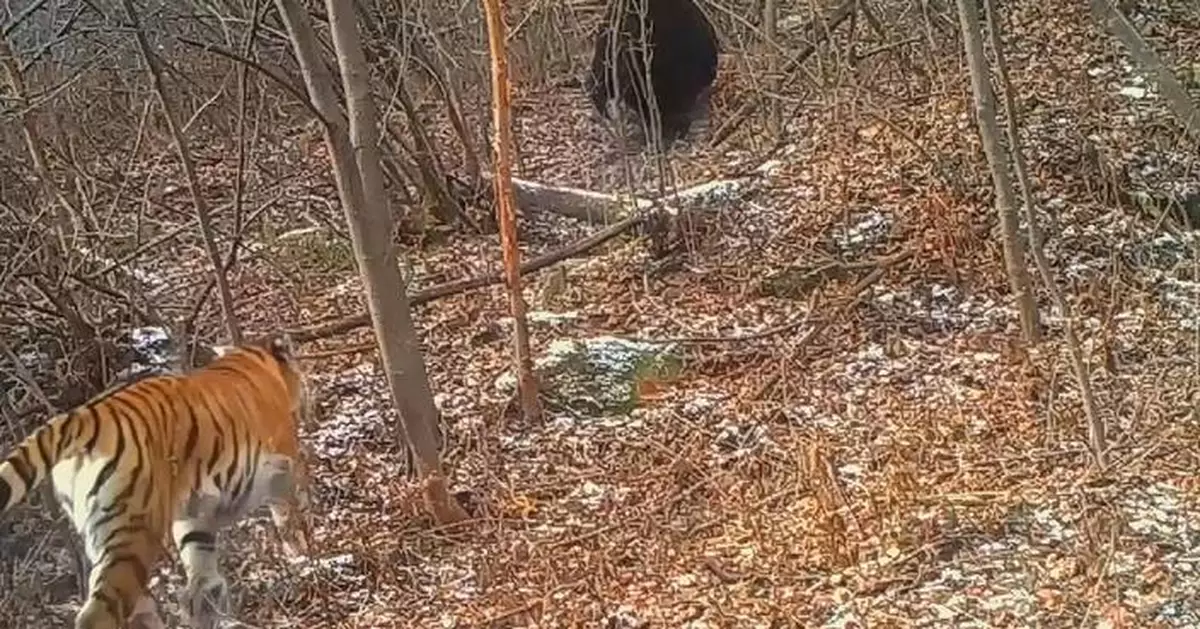A recent wildlife survey in a national park in northeast China reveals that tigers preying on bears is not a rare phenomenon within the park, offering fresh perspectives on predator relationships in the region.
The survey, led by Beijing Normal University and supported by multiple research teams and institutions, is being conducted in the Northeast China Tiger and Leopard National Park (NCTLNP) and marks the launch of its first systematic baseline survey on wildlife resources.
The park, which spans Jilin and Heilongjiang provinces, is home to around 70 wild Siberian tigers, 80 wild Amur leopards, along with brown bears, Asian black bears, and other large carnivores. Officially established in 2021, the park is an important biodiversity hub.
Cameras captured a remarkable scene of a Siberian tiger steadily pursuing a large brown bear, which, despite its typically bulky build and slow movements, displayed surprising agility.
Feng Limin, a professor at the College of Life Sciences of Beijing Normal University, explained that the tiger's steady pursuit was likely due to its youth and inexperience in hunting bears.
DNA analysis of tiger and leopard scat samples has revealed that bears -- traditionally considered apex predators with no natural enemies -- make up a notable portion of the Siberian tiger's diet.
"Based on our initial analysis, we've made some surprising discoveries. For example, we further know that in addition to medium and large herbivores like wild boars and sika deer, tigers also prey on large carnivores, such as bears. We've found that bears make up about 10 percent of the Siberian tiger's diet year round. Infrared camera footage has previously recorded tigers chasing bears," Feng said.
Typically, large carnivores are seen as apex predators with no natural enemies, often avoiding direct confrontations by adjusting their activity patterns. However, increasing reports of tigers preying on both leopards and bears are providing new insights into the complex relationships and food webs within the park's ecosystem.
"This helps us gain a deeper understanding of the ecological processes and complex relationships within the ecosystem of the NCTLNP, contributing invaluable data for the future conservation of its biodiversity," the professor added.

Tigers preying on bears offers new ecological insight


















































